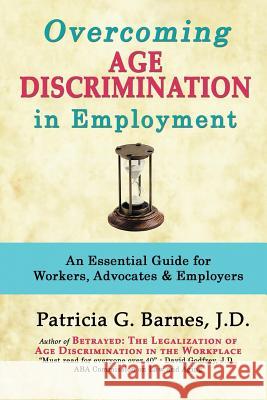Overcoming Age Discrimination in Employment: An Essential Guide for Workers, Advocates & Employers » książka
Overcoming Age Discrimination in Employment: An Essential Guide for Workers, Advocates & Employers
ISBN-13: 9780989870887 / Angielski / Miękka / 2016 / 254 str.
Overcoming Age Discrimination in Employment: An Essential Guide for Workers, Advocates & Employers
ISBN-13: 9780989870887 / Angielski / Miękka / 2016 / 254 str.
(netto: 75,98 VAT: 5%)
Najniższa cena z 30 dni: 79,56
ok. 16-18 dni roboczych
Dostawa w 2026 r.
Darmowa dostawa!
The past 50 years have seen a revolution in the United States. Computers, robotics... the spectacular rise of the Internet. But one thing has not changed appreciably - the Age Discrimination in Employment Act of 1967 (ADEA). The ADEA was weak and riddled with loopholes when it was adopted by the U.S. Congress a half century ago, and it has been further eroded by the U.S. Supreme Court. The law today provides far less protection from age discrimination than discrimination on the basis of race, sex, religion, color and national origin. This lack of equal protection, combined with the difficult economy, has led to epidemic age discrimination in employment, especially in hiring. The problem is so pervasive that it is trickling down to workers in their 30s. OVERCOMING AGE DISCRIMINATION IN EMPLOYMENT is a critical, timely and muchneeded resource for workers, advocates and employers. This book provides an easy-to-understand overview of age discrimination law and uses real cases from the federal courts and the U.S. Equal Employment Opportunity Commission to demonstrate how problems are analyzed and decided. Age discrimination can have severe consequences for both workers and employers. Workers who ignore age discrimination risk termination, chronic unemployment, years of low-wage or temp work, forced early retirement and, ultimately, an impoverished old age. Employers who engage in or ignore age discrimination risk costly litigation, damage to reputation and needless turnover at a time of increasing competition for skilled workers. OVERCOMING AGE DISCRIMINATION IN EMPLOYMENT answers such questions as: -When do ageist remarks rise to the level of illegal harassment? -Who qualifies for the protection of the ADEA? -What factors influence whether the EEOC will dismiss a charge without further investigation as having no reasonable cause? -Can an employer escape liability by replacing an older worker with an even older worker? -What recourse do workers have if they miss EEOC filing deadlines? -Why are employers invariably the big winners in the EEOC's mediation and conciliation programs? -Can an employer fire a group of older workers for picketing outside the company to protest age discrimination? -When does an employment relationship exist? -Why doesn't the ADEA permit the award of punitive damages or damages for emotional distress? -An employer policy that adversely impacts older workers is legal if it is based on a reasonable factor other than age. What is reasonable? -What is an early retirement incentive and when can it be offered? -Are unemployment compensation and welfare benefits deducted from an award of back pay? PATRICIA G. BARNES is a licensed attorney, a former judge and the editor of the employment law blog, Age Discrimination in Employment.com. She wrote the groundbreaking book, BETRAYED: THE LEGALIZATION OF AGE DISCRIMINATION IN THE WORKPLACE (2014), which examines the second-class legal status of older workers. Ms. Barnes also wrote the best-selling legal guide to workplace bullying, SURVIVING BULLIES, QUEEN BEES & PSYCHOPATHS IN THE WORKPLACE (2012) and ZEN AND THE DIFFICULT WORKPLACE (2013).











